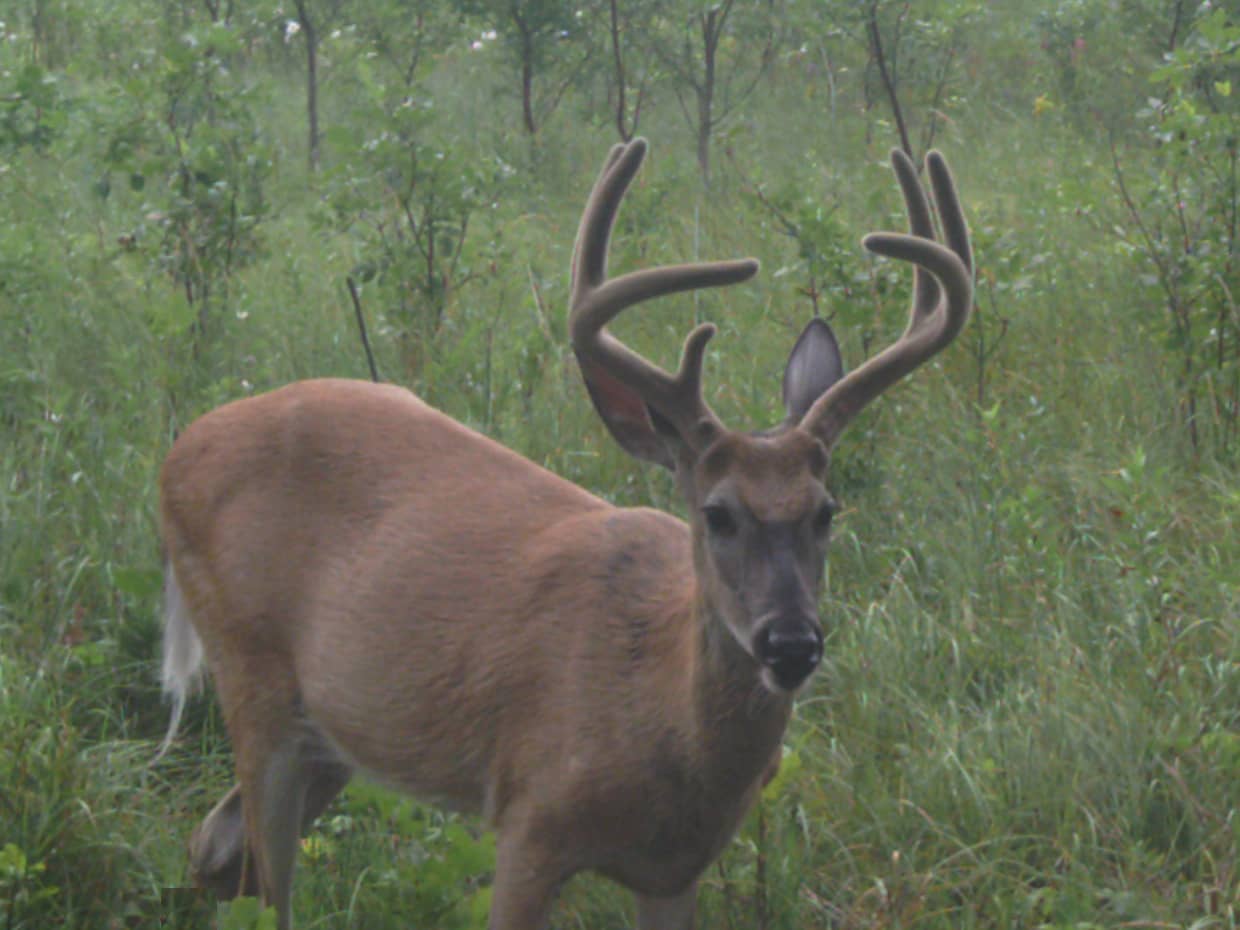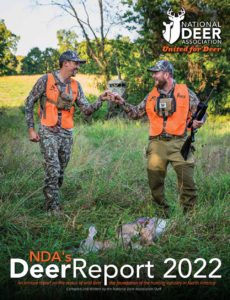
Movin’ On Up. More whitetailed deer are making it into older age classes, as nationwide, management-minded hunters pass on smaller bucks each season and let them grow up, according to the 2022 Deer Report issued by NDA. Simonson Photo.
By Nick Simonson
The release of the 2022 National Deer Association (NDA, online at deerassociation.com) Deer Report confirmed that on the heels of the pandemic in the fall of 2020, more hunters participated in the pursuit of whitetailed deer and other deer species than at any time in recent history.
With that increase in hunters came some record harvests, including more than 3 million bucks taken, more mature bucks tagged than in the last two decades, and the lowest number of yearling bucks harvested nationwide than at any time since the survey behind the Deer Report began in 1989. NDA Chief Conservation Officer, Kip Adams, commented on the purpose of the Deer Report and its major takeaways looking back on 2020.
“It’s designed to be a state of the union address on what’s going on with deer hunting across the United States. Hunters want to know how many deer, what was the age structure and all of that in their state, but we do that for every single state, so folks can see how their states compared to their neighbors or any other state in their region,” Adams explains of this year’s report and its major data points, adding, “two big things, one was just the sheer numbers of deer.

Hunters shot more deer than they had since 2011. It had been quite a while, so a lot of deer went into the freezer. And probably even bigger than that, it was the highest buck harvest – those with antlers, all those bucks that are one-and-a-half or older – in the past 21 years.
Balance Achieved
Adams pointed out that since the inception of quality deer management practices, particularly in the east and southeast regions of the U.S. and elsewhere in the 1990s and early 2000s, the age structure of herds throughout the country has improved, and the mindset of hunters has shifted from harvesting the first deer they see which is legal to tag, to letting younger bucks grow and develop a more balanced age structure. Overall, 41 percent of hunters in the three surveyed regions harvested deer that were three-and-a-half years or older, while only 29 percent harvested yearling bucks (one-and-a-half or younger) in 2020. Through that process, hunters are finding more and more deer in that three-and-a-half and older group and harvesting more mature bucks, while helping build better herds.
“Hunters have never done a better job protecting yearling bucks and letting them get a little bit older. As soon as they get to two-and-a-half, and then some will slip through and become three and then some slip through and get to four [years old]. Hunters today have a better opportunity to hunt an advanced age structure for bucks than in the last 150 years, so we’re pretty lucky,” Adams relates, adding, “that’s a very natural age structure, that’s the way deer evolved, their social order works best when we have a complete age structure. And by hunters passing the majority of those yearling bucks letting them get a little older, that just means those deer herds will work the way they’re supposed to. That provides tremendous hunting and viewing opportunities for us.”
Threats Amidst Success
While many upswings and notable successes buoy the numbers and the prospects for the future in this year’s Deer Report, the organization recognizes the expanding threat of diseases impacting wild cervids like whitetailed deer. The most notable among them is chronic wasting disease (CWD), and its continued spread from state to state and throughout the Canadian provinces is documented in the annual compendium. That spread, says Adams, is the largest danger to the future of healthy deer herds, bigger bucks, and a continued deer hunting heritage. For that reason, NDA has invested a significant amount of time, money, and media to help hunters join the fight and curb the spread of CWD in their hunting areas.
“We can fight this disease every single day. Every hunter can do his or her part. One of the big things is to limit the movement of infectious parts of the deer. To make sure that we can sample and figure out where the disease is and keep from spreading it. We have a CWD resource center on our website that has all kinds of information to show hunters here’s what you should know and here’s how you can help. We look at this as one of the biggest threats to the future of our deer hunting, so we spend a tremendous amount of time trying to protect our deer resources and educate hunters as best as possible so we can all be in this fight,” Adams stresses.
Local Notes
According to the 2022 Deer Report, South Dakota hunters harvested 30 percent more antlered deer in 2020 than in 2019, the second largest increase in the nation. North Dakota reported the highest average dressed weight for yearling bucks, suggesting young deer in the state were quite healthy headed into the fall of 2020. North Dakota, along with Nebraska, led the nation in fewest bucks shot per square mile (0.4 bucks/mi2).
“North Dakota only averages only about one-and-a-half deer hunters per square mile, Pennsylvania [which led in bucks harvested per square mile at 3.9] leads the country with 15 deer hunters per square mile. Simple hunter numbers makes a huge difference in the number of deer we shoot and I think that’s what makes the difference there,” Adams explains.
Over the last four years, however, North Dakota has been at the top of the list percentage wise in adding to its deer hunting ranks as the North Dakota Game & Fish Department steadily increased offered deer firearms licenses from 49,000 in 2016 to 69,050 in 2020. The 75 percent increase was second only to Wyoming’s increase of 130 percent. South Dakota’s mule deer harvest increased by 13 percent over 2019, leading all states in the nation.
Hunters can download the 2022 NDA Deer Report at deerassociation.com/2022-deer-report.
